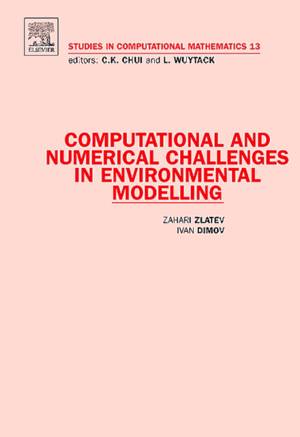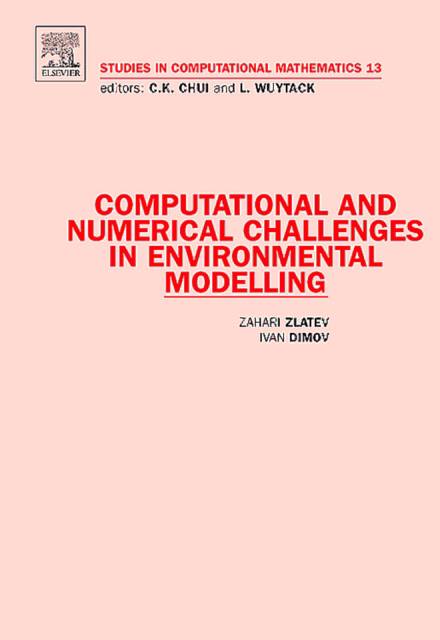
- Afhalen na 1 uur in een winkel met voorraad
- Gratis thuislevering in België vanaf € 30
- Ruim aanbod met 7 miljoen producten
- Afhalen na 1 uur in een winkel met voorraad
- Gratis thuislevering in België vanaf € 30
- Ruim aanbod met 7 miljoen producten
Zoeken
Computational and Numerical Challenges in Environmental Modelling
Volume 13
Zahari Zlatev, Ivan Dimov
€ 188,95
+ 377 punten
Omschrijving
Many large mathematical models, not only models arising and used in environmental studies, are described by systems of partial differential equations. The discretization of the spatial derivatives in such models leads to the solution of very large systems of ordinary differential equations. These systems contain many millions of equations and have to be handled over large time intervals by applying many time-steps (up to several hundred thousand time-steps). Furthermore, many scenarios are as a rule to be run. This explains the fact that the computational tasks in this situation are enormous. Therefore, it is necessary to select fast numerical methods; to develop parallel codes and, what is most important when the problems solved are very large to organize the computational process in a proper way.The last item (which is very often underestimated but, let us re-iterate, which is very important) is the major topic of this book. In fact, the proper organization of the computational process can be viewed as a preparation of templates which can be used with different numerical methods and different parallel devices. The development of such templates is described in the book. It is also demonstrated that many comprehensive environmental studies can successfully be carried out when the computations are correctly organized. Thus, this book will help the reader to understand better that, while (a) it is very important to select fast numerical methods as well as (b) it is very important to develop parallel codes, this will not be sufficient when the problems solved are really very large. In the latter case, it is also crucial to exploit better the computer architecture by organizing properly the computational process.
Specificaties
Betrokkenen
- Auteur(s):
- Uitgeverij:
Inhoud
- Aantal bladzijden:
- 392
- Taal:
- Engels
- Reeks:
- Reeksnummer:
- nr. 13
Eigenschappen
- Productcode (EAN):
- 9780444522092
- Verschijningsdatum:
- 1/06/2006
- Uitvoering:
- Hardcover
- Formaat:
- Genaaid
- Afmetingen:
- 171 mm x 242 mm
- Gewicht:
- 830 g

Alleen bij Standaard Boekhandel
+ 377 punten op je klantenkaart van Standaard Boekhandel
Beoordelingen
We publiceren alleen reviews die voldoen aan de voorwaarden voor reviews. Bekijk onze voorwaarden voor reviews.











